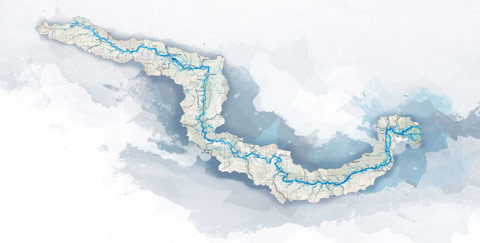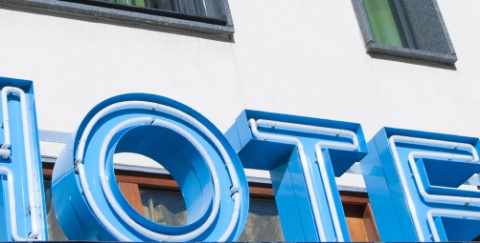
Aside heavy damages in World War II, Esztergom recovered again. Just in the 1930s, the old Palace of Árpád dynasty times was explored and reconstructed. Castle and palace were the heart of Hungary, when Esztergom was the capital of Hungary from 10th to mid 13th century, when King Béla IV of Hungary made Buda the new Royal capital. Below the Basilica, old walls, bastions and roundels of the ancient castle can still be admired.
Latest archeological excavations at and nearby Várhegy (Castle Hill) have shown that this important place was inhabited even some 22 000 years ago, by first human settlers. First major fortifications of the inhabited area may date back even to Celtic (150 BC) and Roman times (1st century AD), when the city was called Solva, meaning watch post. Medieval Latin formed this city name into Setrigonium, which again became later on Esztergom (first mentioned in 1079 AD).
After the Great migration period which saw Germanic tribes, Avars and Slavic tribes, first Magyars conquered the urban area, around 901 AD. Before, legends see here also the final murder scene of the German Nibelungs Saga.
From 1934 – 1938, most of the area was archeologically explored, the Old Esztergom Palace of Árpád dynasty times was re-identified and partly reconstructed. Castle and palace once were the heart of Hungary, when Esztergom was the capital of Hungary from 10th to mid 13th century, when King Béla IV of Hungary made Buda the new Royal capital.
In 960, Esztergom became residential town under the Hungarian ruling Prince Géza. His son, Vajk, who later on became St Stephen of Hungary, was born in this palace, which was constructed on the remains of the Roman Castrum of Solva, on northern part of Várhegy (Castle Hill), 969 – 975 AD. The central part of the hill was dominated by the basilica of St Adalbert, who is said to have baptized the then Holy King Stephen. The Church became seat of the archbishop of Esztergom, who ruled the Hungarian Roman Catholic Church. Below the Basilica, old walls, bastions and roundels of the ancient castle can still be admired.
St Stephen was crowned in Esztergom, or in 1000 AD, or in 1001 AD. Later on and until the Mongol invasion of 1241 AD, a new castle palace was built and served as Royal seat of Hungarians. Today, one can still see stairs, arches and gates of Romanesque and early Gothic style, mostly built under King Béla III, by French architects (end of 12th century AD). The palace and castle saw the visits of Holy Roman Emperor Conrad II (ca. 990 – 1039 AD), Holy Roman Emperor Frederick Barbarossa (Frederick I; 1122 – 1190 AD), who visited King Bela III in 1189, on the way to his crusade to Jerusalem, and other illustrious people.
Esztergom Palace was described as an outstanding architectonical beauty, and the nucleus of Hungarian richness, which was created thanks to traffic and trade on the Danube.
When Tatars (Mongols) crossed the Danube and conquered Esztergom, all glory came to an end. Bela IV moved the Royal seat to Buda, the castle and palace became the seat of the Archbishop of Esztergom. However, Bela IV was buried with his wife in the Franciscan Church of Esztergom, rebuilt in 1270 AD.
Until the 16th century, the Esztergom archbishops rebuilt and decorated the palace and castle again. Esztergom became an important political and cultural place. Most important are the frescoes of the palace chapel (12th – 14th century) and outstanding paintings of early Hungarian Renaissance (15th century) can be found. From the palace terrace, admire Esztergom and the quarter of the former Bishop`s town (including the palace of the Primate of Hungary), today called Víziváros’ (Watertown).
After the lost battle of Mohács, in 1526, the decline of Esztergom started. Ferdinand I occupied Esztergom Castle in 1530, but in 1543, the troops of Sultan Suleiman I conquered it after a fortnight of heavy battles. During the forthcoming times, Esztergom again and again became the focus of heavy battles between the powers of Vienna and Budapest, Ottomans and Habsburg Emperors. In 1683, ottomans lost the castle, but attacked for the last time in 1685 (unsuccessfully). The devastating times ended, but of 65 villages, once belonging to Esztergom rulers, only 22 were rebuilt, due to lack of surviving people. New settlers moved in, and in 1761, the archbishops of Esztergom returned into the castle. The whole castle area became a new religious center, until 1820. All culminated with the construction of the new Basilica. Today, archeological research is still ongoing.
The Castle museum conserves artifacts of early Royal and Archbishop`s eras, Romanesque, and early Gothic style masterworks, Renaissance style masterpieces and much more. Admission: free of charge. Visit also St Thomas Hill opposite the palace, and see Danube and its surroundings.
DANUBE.TRAVEL has no control over the website content generated by users and/or visitors, neither such content represents a statement, opinion, recommendation or rating by DANUBE.TRAVEL. For further information please refer to DANUBE.TRAVEL – General Website Terms and Conditions of Use.
Where to stay
What to do
Primatial Basilica of the Blessed Virgin Mary Assumed Into Heaven and St Adalbert and Basilica Treasury
The giant classic style sacral building is the big...
 EN
EN DE
DE











